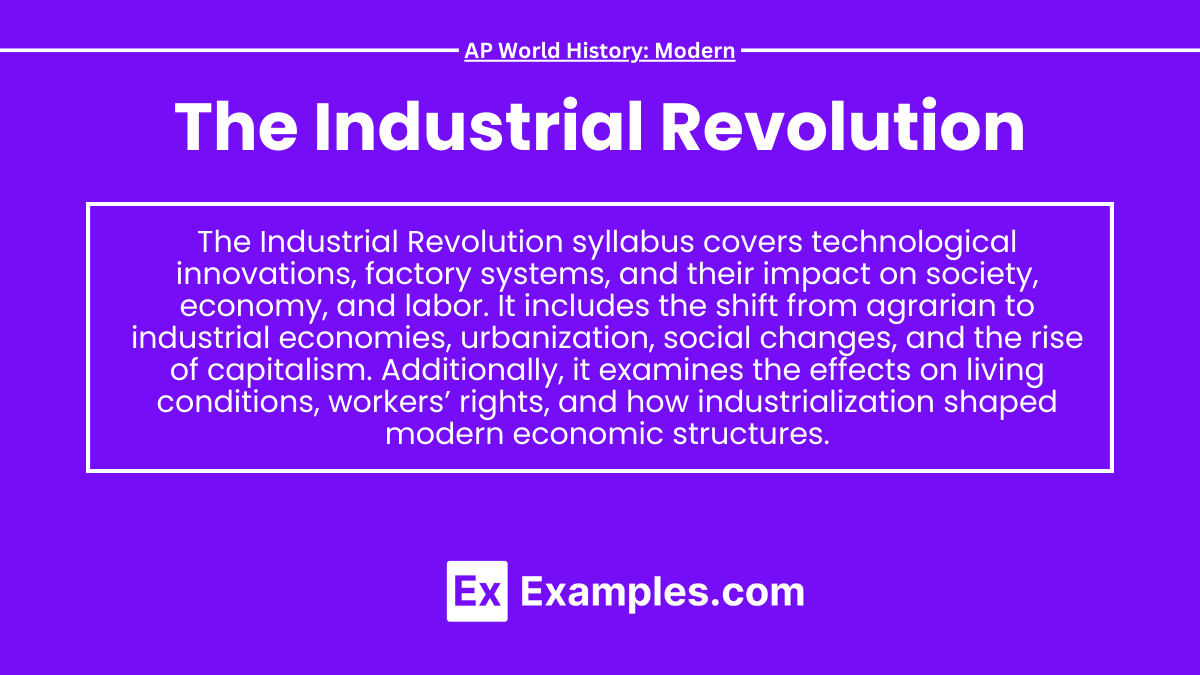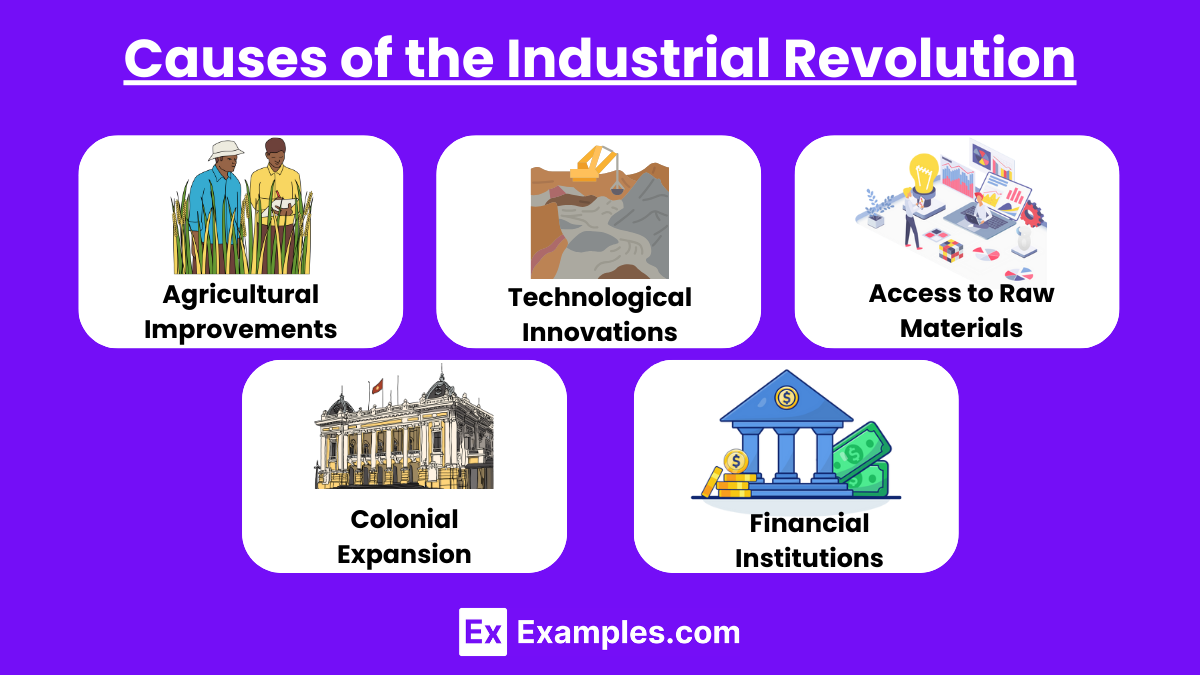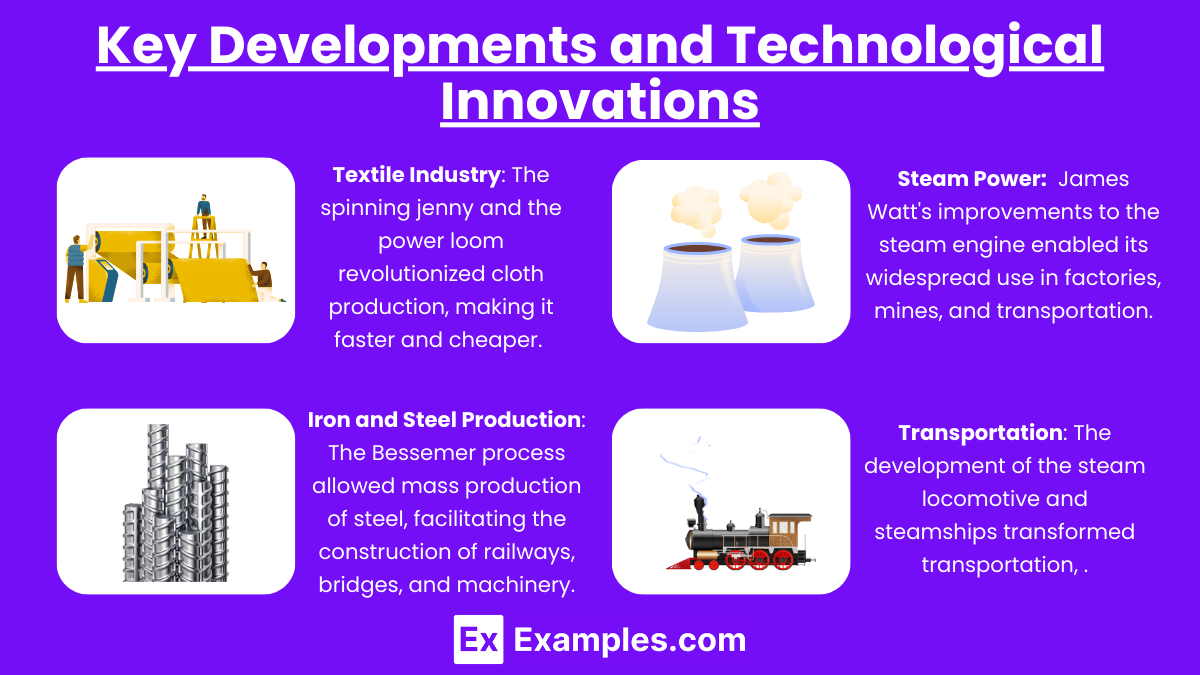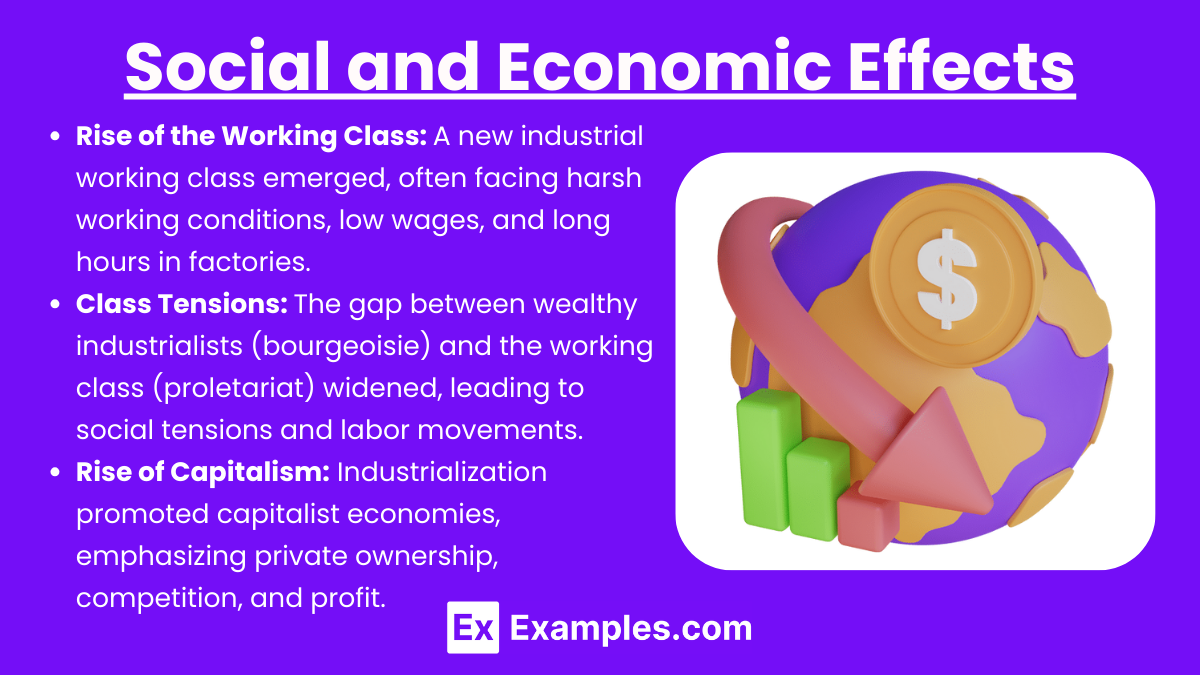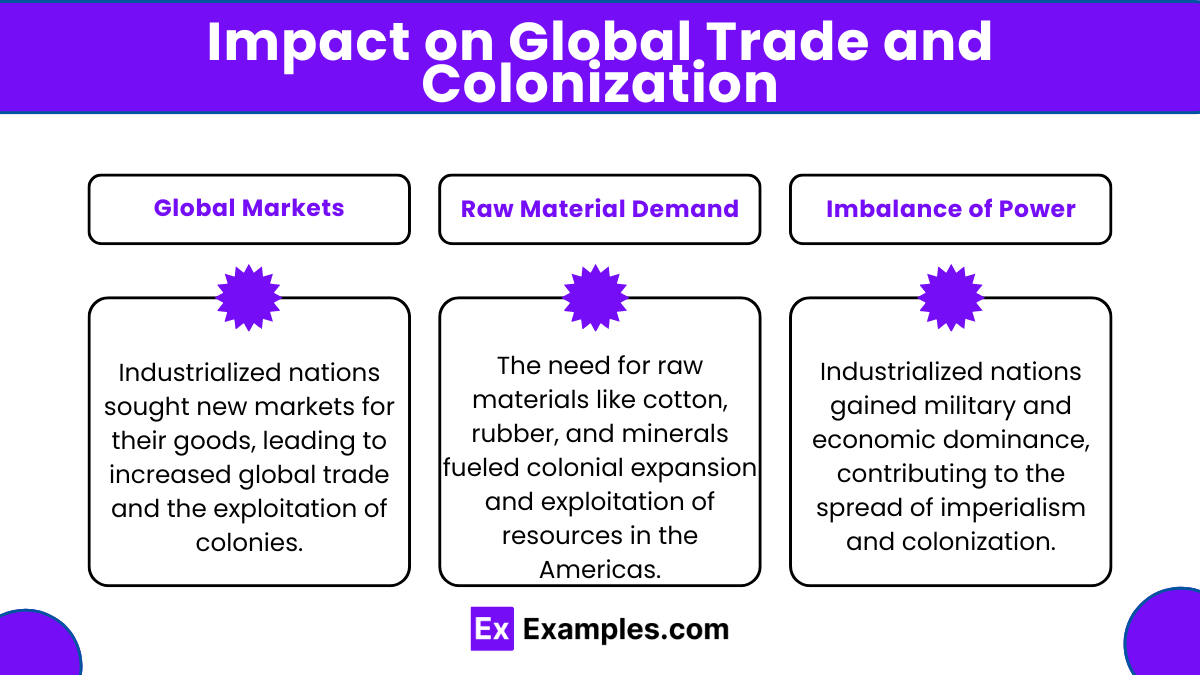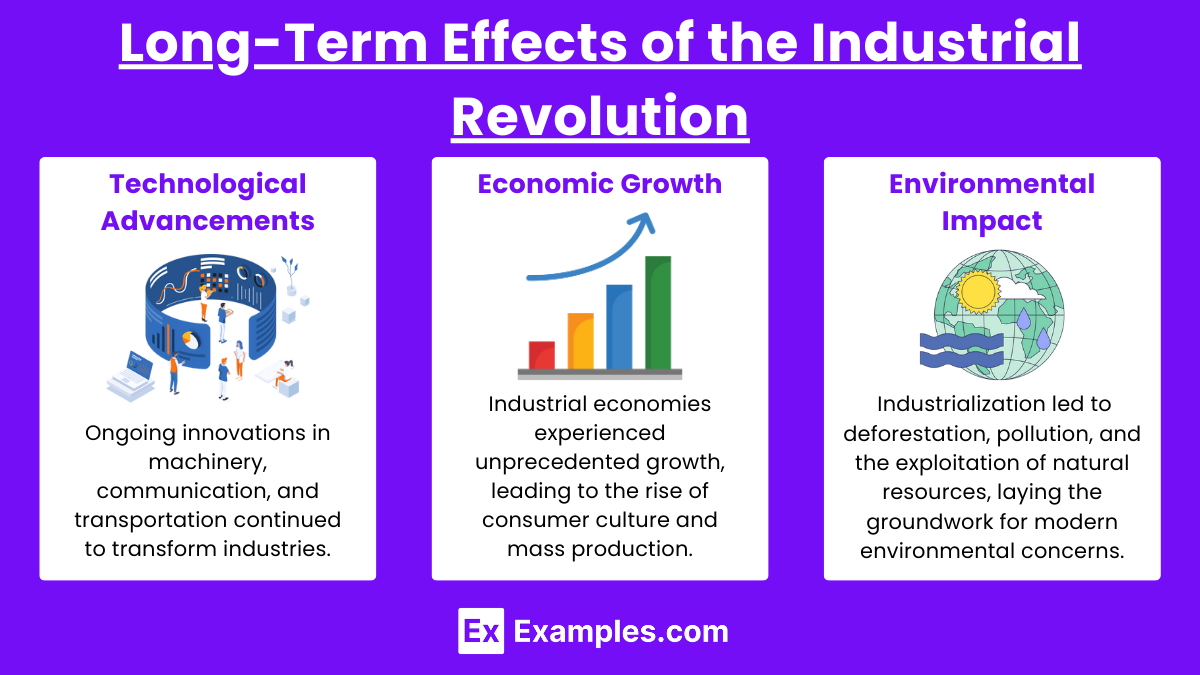The Industrial Revolution, beginning in Britain in the late 18th century, marked a transformative shift from agrarian economies to industrialized societies. Technological advancements like the steam engine and mechanized textiles revolutionized production, leading to urbanization, social changes, and the rise of capitalism. This period profoundly impacted global trade, colonization, and the modern world, shaping economic and political landscapes.
Free AP World History: Modern Practice
Learning Objective
In studying "The Industrial Revolution" for AP World History: Modern, you should learn to identify the technological innovations and economic factors that sparked industrialization, including the rise of factories, steam power, and mechanized production. Analyze the social, economic, and environmental effects of industrialization on urbanization, labor conditions, and class structures. Evaluate how the Industrial Revolution reshaped global trade, economic systems, and imperialism, and explore its role in accelerating global inequality. Additionally, consider the responses to industrialization, such as labor movements, social reforms, and the development of new political ideologies like socialism and capitalism.
1. Causes of the Industrial Revolution
Agricultural Improvements: The Agricultural Revolution introduced crop rotation, selective breeding, and new farming techniques, leading to increased food production and surplus labor.
Technological Innovations: Inventions like the steam engine, spinning jenny, and power loom revolutionized manufacturing processes, increasing efficiency and production.
Access to Raw Materials: Britain had abundant coal and iron, essential for powering machinery and building infrastructure.
Colonial Expansion: European colonial empires provided access to raw materials and markets for manufactured goods, fueling industrial growth.
Financial Institutions: A robust banking system and investment in enterprises supported industrial ventures and infrastructure development.
2. Key Developments and Technological Innovations
Textile Industry: The spinning jenny (James Hargreaves) and the power loom (Edmund Cartwright) revolutionized cloth production, making it faster and cheaper.
Steam Power: James Watt's improvements to the steam engine enabled its widespread use in factories, mines, and transportation.
Iron and Steel Production: The Bessemer process allowed mass production of steel, facilitating the construction of railways, bridges, and machinery.
Transportation: The development of the steam locomotive and steamships transformed transportation, connecting markets and resources across vast distances.
Urbanization: As factories grew, people migrated to urban centers in search of work, leading to rapid urbanization and the growth of cities.
3. Social and Economic Effects
Rise of the Working Class: A new industrial working class emerged, often facing harsh working conditions, low wages, and long hours in factories.
Class Tensions: The gap between wealthy industrialists (bourgeoisie) and the working class (proletariat) widened, leading to social tensions and labor movements.
Living Conditions: Urban areas faced overcrowding, unsanitary conditions, and inadequate housing, resulting in public health challenges.
Rise of Capitalism: Industrialization promoted capitalist economies, emphasizing private ownership, competition, and profit.
Impact on Women and Children: Many women and children worked in factories, often in dangerous and poorly paid jobs, leading to social reform movements.
4. Impact on Global Trade and Colonization
Global Markets: Industrialized nations sought new markets for their goods, leading to increased global trade and the exploitation of colonies.
Raw Material Demand: The need for raw materials like cotton, rubber, and minerals fueled colonial expansion and exploitation of resources in Africa, Asia, and the Americas.
Imbalance of Power: Industrialized nations gained military and economic dominance, contributing to the spread of imperialism and colonization.
5. Long-Term Effects of the Industrial Revolution
Technological Advancements: Ongoing innovations in machinery, communication, and transportation continued to transform industries.
Economic Growth: Industrial economies experienced unprecedented growth, leading to the rise of consumer culture and mass production.
Environmental Impact: Industrialization led to deforestation, pollution, and the exploitation of natural resources, laying the groundwork for modern environmental concerns.
Examples
Example 1: The Spinning Jenny
Invented by James Hargreaves in 1764, the spinning jenny allowed workers to spin multiple threads simultaneously, revolutionizing the textile industry. This innovation dramatically increased the speed and efficiency of cloth production, leading to the rise of factories and mass production in the textile sector.
Example 2: Steam Engine
James Watt's improved steam engine, developed in the late 18th century, became a cornerstone of the Industrial Revolution. It provided a reliable power source for factories, mines, and transportation, leading to the growth of industries and enabling advancements in railways and steamships.
Example 3: Railroad Expansion
The development of railways, such as the Stockton and Darlington Railway in 1825, transformed transportation. Railroads enabled faster movement of goods, raw materials, and people, connecting industrial centers, reducing transportation costs, and fostering economic growth across regions.
Example 4: Iron and Steel Production
The Bessemer process, introduced by Henry Bessemer in the 1850s, revolutionized steel manufacturing. This method allowed mass production of steel at a lower cost, making it essential for building railways, bridges, machinery, and skyscrapers, and fueling industrial expansion.
Example 5: Urbanization and Factory System
The Industrial Revolution led to a massive migration from rural areas to urban centers, as people sought employment in factories. Cities like Manchester and Birmingham in England grew rapidly, becoming hubs of industrial activity, and changing the social structure and living conditions of workers.
MCQs
Question 1
Which invention had the most significant impact on the textile industry during the Industrial Revolution?
A) Steam engine
B) Spinning jenny
C) Telegraph
D) Cotton gin
Answer: B) Spinning jenny
Explanation: The spinning jenny, invented by James Hargreaves, allowed workers to spin multiple threads at once, greatly increasing textile production and revolutionizing the industry’s efficiency.
Question 2
Which process revolutionized steel production during the Industrial Revolution?
A) Crop rotation
B) Spinning jenny
C) Bessemer process
D) Enclosure movement
Answer: C) Bessemer process
Explanation: The Bessemer process, introduced in the 1850s, enabled mass production of steel by removing impurities from iron, making steel manufacturing faster, cheaper, and more efficient.
Question 3
What was one of the major effects of the Industrial Revolution on urban areas?
A) Decline in population
B) Increase in rural jobs
C) Rapid urbanization
D) Reduction in factory work
Answer: C) Rapid urbanization
Explanation: The Industrial Revolution led to rapid urbanization as people moved to cities for factory jobs, causing cities to expand quickly and altering living conditions.

